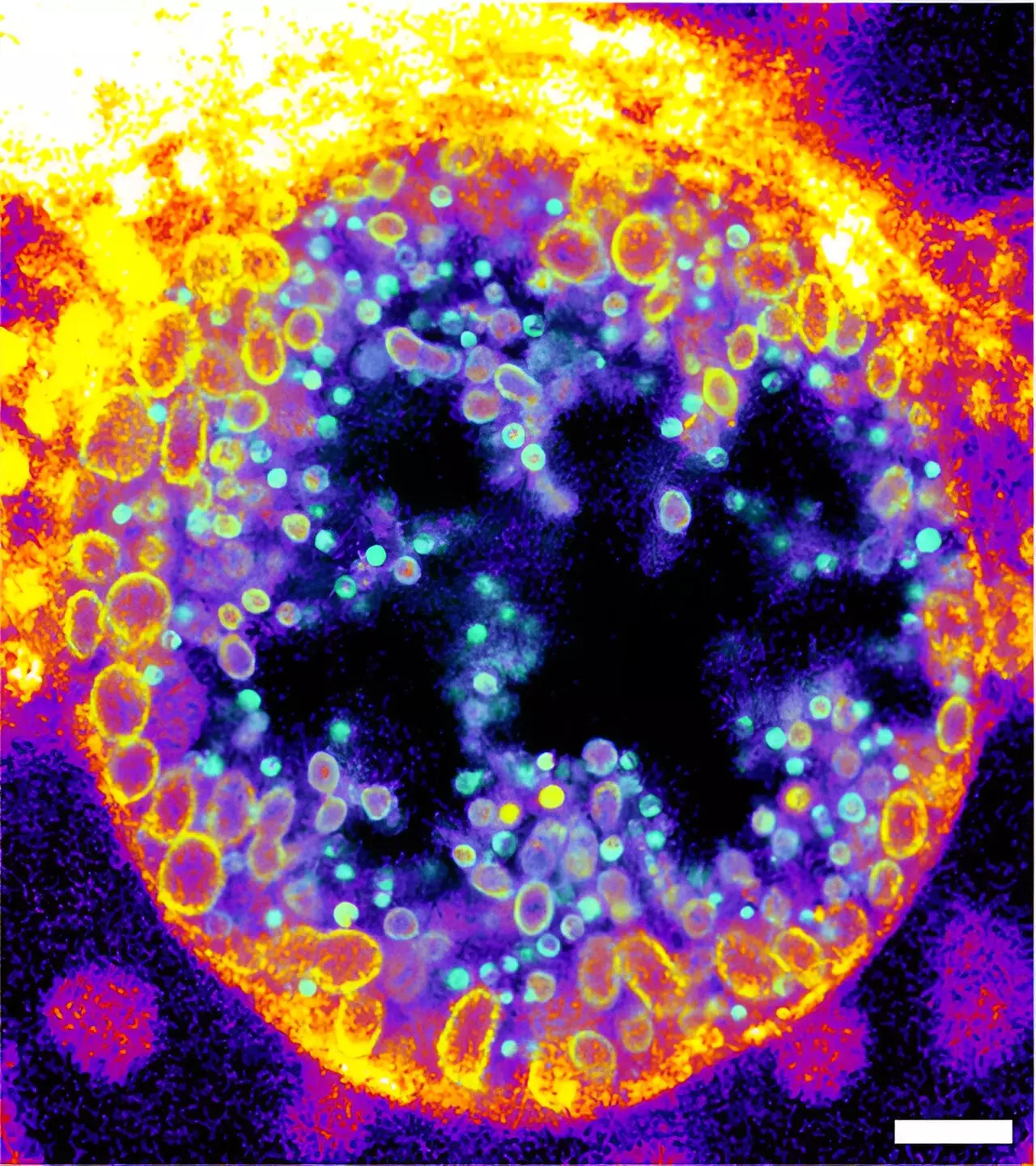Recent advancements in the field of lipid research have opened new avenues for understanding the complexities of sphingomyelin metabolism. A collaborative team of researchers from the University of Würzburg and Berlin has unveiled a groundbreaking molecule designed to visualize sphingomyelin metabolism, thereby offering innovative therapeutic avenues particularly in infection research. This significant work was published in the renowned journal *Nature Communications*. The historical context of sphingolipids dates back to the late 19th century, when German pathologist Ludwig Thudichum first identified these fatty substances in the brain. His naming of sphingolipids, inspired by the enigmatic Sphinx, foreshadowed the intricate mysteries these molecules would postulate for future researchers.
Since their discovery, sphingolipids have been implicated in a variety of diseases, particularly those linked to dysfunctional sphingolipid metabolism in the brain. Notable examples include Fabry’s disease and Gaucher’s disease, conditions that underscore the critical role of sphingolipids in maintaining cellular health. Furthermore, their relevance extends beyond neurological disorders; sphingolipids have been associated with infectious diseases as well. For instance, they play a pivotal role in many viral infections, including the likes of Ebola, measles, and COVID-19, as well as with bacterial infections due to pathogens such as *Pseudomonas aeruginosa* and *Staphylococcus aureus*. These infections not only cause middle ear, lung, and skin ailments but can also lead to severe complications if left unchecked.
Within the context of these infections, the enzyme sphingomyelinase has often emerged as a critical player. This enzyme’s ability to degrade sphingomyelin has profound implications for the progression of various diseases, highlighting the need for effective methods to visualize its metabolic activity.
The recent advancements by the researchers allow for groundbreaking insight into sphingomyelin metabolism during infection processes. Until now, visualizing the activity of sphingomyelinase has remained a formidable challenge. However, the creation of a novel sphingomyelin derivative marks a significant milestone in research. This derivative enables the monitoring of both sphingomyelin distribution and sphingomyelinase activity during infection. The team, part of the Research Training Group 2581, is composed of experts from chemistry, physics, and biology, working synergistically to synthesize new chemical compounds tailored for infection research applications.
According to Professor Jürgen Seibel from the Institute of Organic Chemistry at Julius-Maximilians-Universität Würzburg, the synthesis of these trifunctional sphingomyelins was no simple task. The challenge lay in designing these molecules so that they would be metabolically accepted by cells in a manner akin to their natural counterparts, maintaining their functionality in the complex biochemical environment.
Visual Evidence of Infection Dynamics
The effectiveness of these newly developed molecules has been demonstrated through comprehensive experimental techniques. The researchers were successful in measuring the activity of bacterial sphingomyelinase on human cell surfaces. Furthermore, they visualized sphingomyelin degradation within human cells during infection by *Chlamydia*, a bacterium known for infecting the human genital tract and potentially influencing cancer development in infected tissues. These chlamydial inclusions, which serve as replicative organelles, were found to be rich in the cleaved forms of trifunctional sphingomyelins.
Utilizing cutting-edge methods such as expansion microscopy and click-chemistry, the researchers observed a striking increase in the metabolized forms of sphingomyelin molecules as *Chlamydia* transitioned from non-infectious to infectious particles. This newfound ability to visualize the intricate processes of infection could lead to the development of targeted therapeutic interventions aimed at these persistent infections. In Professor Seibel’s words, “The new chemical tool will certainly serve us well and can readily be used in many laboratories,” underscoring the molecule’s potential for widespread application in research.
Implications for Future Research
The comprehensive exploration of sphingomyelin metabolism and its visualization presents unprecedented opportunities in both basic and applied research. With this novel methodology, scientists can now delve into the complexities of lipid interactions during infectious processes, potentially revealing new therapeutic targets. As the researchers continue their work, the implications of these developments for the future of infection research, as well as for understanding lipid metabolism in health and disease, cannot be overstated. Ultimately, this innovative approach may not only elucidate the mysteries of sphingolipid biology but also pave the way for new strategies in combating infectious diseases.


Leave a Reply